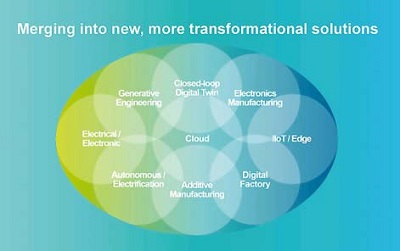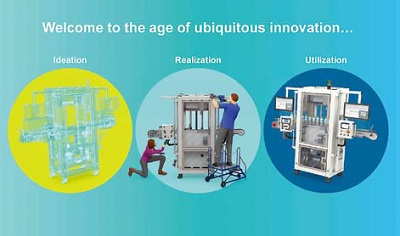
Is it possible to innovate without boundaries? As PLM (product lifecycle management) digital strategy is quickly becoming a core part of addressing the needs of a growing manufacturing business in South East Asia, running a digitalised business is no longer just a consideration during a typical use-case exercise. Business executives are now faced with making decisions on solutions that go beyond previous limitations. Selecting the latest tools to address a business process gap is now less about features and more about functionality.
Siemens held its Industry Analyst Conference (SIAC) from August 27-30 in Boston. A follow up report by International Metalworking News for Asia Senior Editor Kathryn Gerardino-Elagio who was a part of the media delegate reveals the extent to which Siemens is poised to play a major role in navigating the best path to building, running, and operating your own critical business processes.
In his speech, “Innovate without Boundaries,” Tony Hemmelgarn, President and CEO explained the transformative business value of the digital enterprise can only be realised by dissolving the boundaries between people, processes and applications. “We are integrating software applications into new solutions that reflect and support our customers’ pursuit of more ubiquitous innovation,” he added.
Tony quoted Mark Weiser, Chief Scientist at Xerox, Father of Ubiquitous Computing, “The most profound technologies are those that disappear. They weave themselves into the fabric of everyday life until they are indistinguishable from it.” Mark’s quote articulated a far more powerful role for technology. It speaks clearly of what Siemens is trying to convey to everyone present during the conference in Boston.
Technology can and should extend beyond to become something far more powerful and Siemens is an advocate that empowers you to be smarter, better, adept, more accomplished.
The age of ubiquitous innovation
According to Tony, the boundaries between systems are disappearing: Ideation, Realisation, and Utilisation. The old rigid labels are dissolving, such as CAD, CAE, PLM, CAM, EDA and etc. The question now is how do you connect? At Siemens, Tony explained that they are focusing on optimising integrated solutions. “New data management technologies can bring more data transparency, collaboration and connections,” he stated.
Tony highlighted, “The new generation of PLM systems place solid foundation behind data organisation allowing manufacturing companies to manage data, collaborate and connect pieces of information using new data management tools including flexible data models, database frameworks and machine learning.”

Key integration initiatives
The president and CEO outlined the key integration initiatives that can help improve business processes: (1) Closed-loop Digital Twin: Use real-world performance insights to change the way you do business. Integrating planning, design, and engineering with ERP and production for >97% on-time delivery. (2) Generative Engineering: Automate engineering exploration to find optimal designs and systems orders of faster magnitude. (3) Electrical / Electronic Integration: Optimise design and manufacturing of complex electrical, electronic and mechanical systems. (4) Autonomous Mobility /Electrification: Realise autonomous mobility faster by integrating design and validation of the entire system in one environment. (5) Additive Manufacturing: Industrialise additive manufacturing to design and produce useful parts at scale. (6) Digital Factory: Build intelligently automated digital factories to achieve configurable, flexible and personalised production. (7) IIoT/Edge: Leverage IoT insights to increase productivity, optimise products and discover new business models. (8) Electronics Manufacturing: Accelerate NPI by “left-shifting” engineering and planning to achieve right-first-time manufacturing. (9) Cloud: Bring continuous innovation to market faster with flexible cloud solutions and rapid application development.
With the growing expectations from manufacturing companies in South East Asia, it’s a key opportunity for new-generation PLM systems to break into the marketplace. Introducing a connected solution to a traditional industry with long-established pricing and regulatory practices will be a real challenge. But the region is ready to embark on a path to significant transformation that powers greater agility and competitiveness.
It doesn’t matter if your company is experienced with PLM digital strategy or new to the concept. PLM digital strategy is quickly becoming a core part of addressing the needs of a growing business.
Ni?o/a














